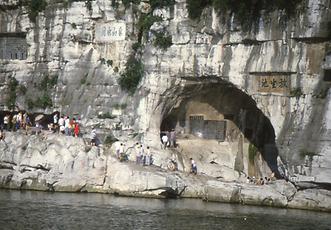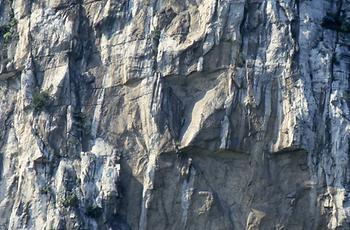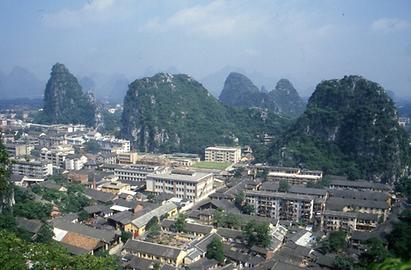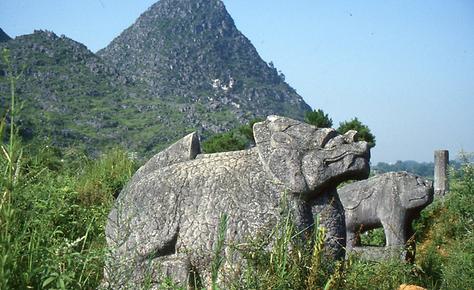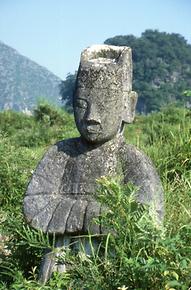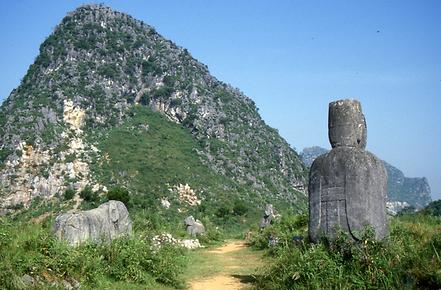The most spectacular river scenery in China#
The Li Jiang-River and the mountains through which it flows#
ByAll photos were taken in 1986 by the author and are part of his archive "Pictureflood Jontes".
Whereas the Tai Shan embodies the artistic principle of rock painting in Chinese art, amongst China’s rivers the river Li (chin. Li Jiang) does the same for landscape painting. Smooth river banks, staffage scenes of scenery, bizarre mountain structures in the distance, bamboo groves und boats still provide sources of continuous inspiration.
Considering its topographical course the river is rather unimportant for China. It flows through two townships of which Guilin possesses some historical significance and today Yangshuo functions as a center of agriculture and even tourism. This stems from the beauty of the landscapes surrounding its river banks, which today draws a large number of people from all over. On the pleasant river boats they can watch the ever changing landmarks go by.
The Li Jiang originates in the Autonomous Region Guangxi Zhuang and joins at its end another rather unimportant river, the Gui Jiang. Its length amounts to 437 km, which almost exactly matches the length of the main Styrian river, Mur, of 453 km! Along its river banks live the Zhuang people, China’s largest ethnic minority behind the majority of Han Chinese. They make up about 17 million people; thereby they are more numerous than the Tibetans and Mongols living in the people’s republic of China.
Over millions of years the ground consisting of limestone was raised up by geological forces only to be eroded by atmospheric gases over the course of millions of years. Thus, steep bizarre looking karst structures were created which are unlike any other rock formations worldwide. Also, there are many caves with large numbers of stalactites and stalagmites.
Standing on their own there are conically shaped rocks with some steep walls. According to folklore several mystical figures can be recognized in the rugged rock walls.
Now the boat glides down the river passing karst mountains dominating the horizon.
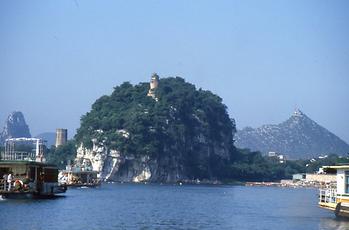

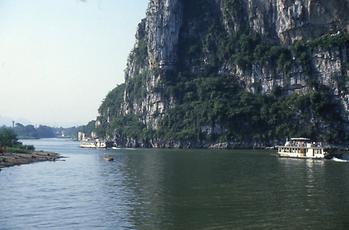
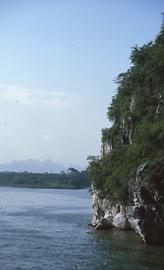
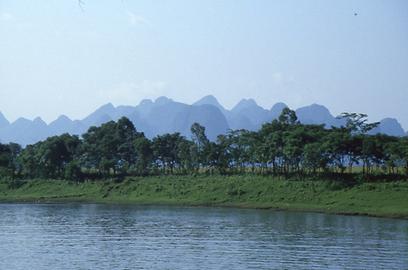
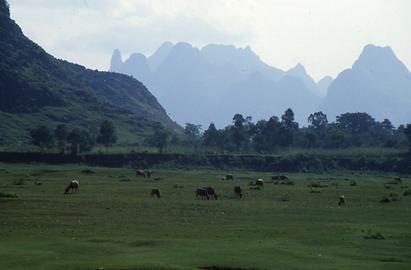
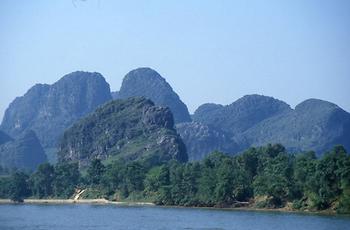
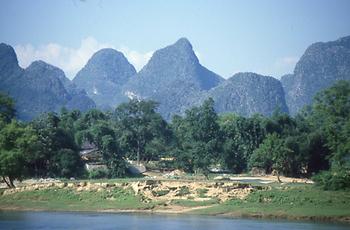
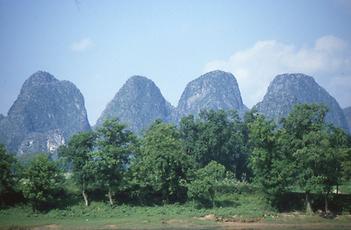
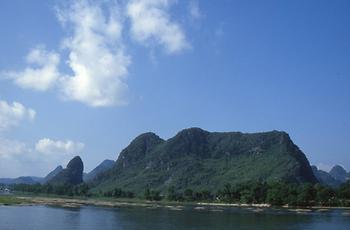
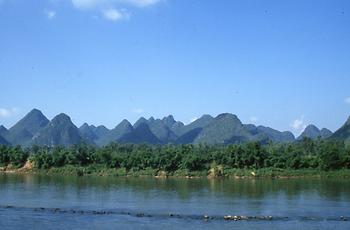
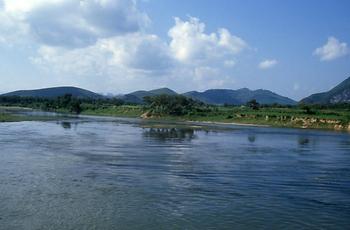

The river serves not only as a traffic route. Its water-plants are also used as animal feed. They are either harvested by the Zhuang farmers or are directly eaten above or below the surface by contently bathing water buffalos.
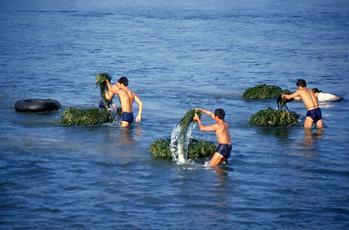

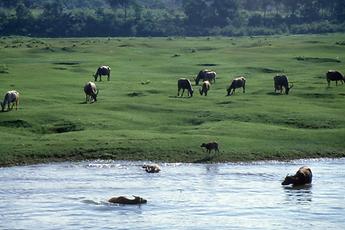
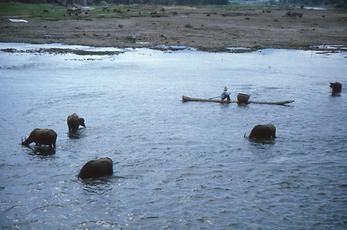

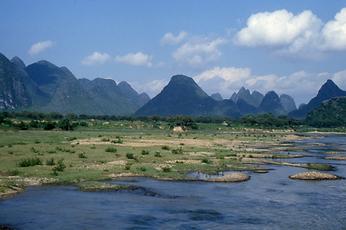
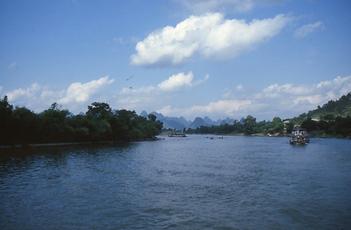
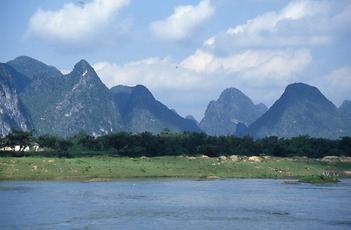

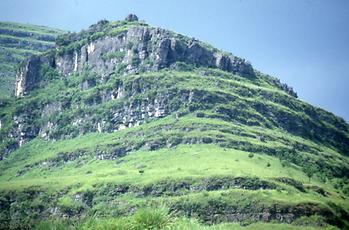
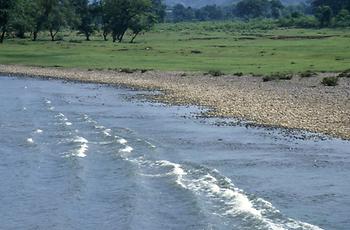


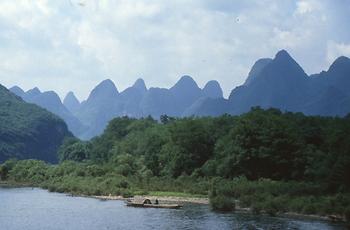
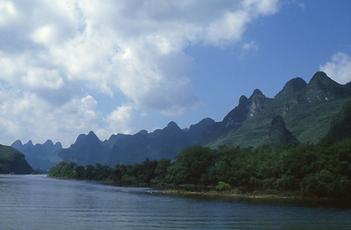
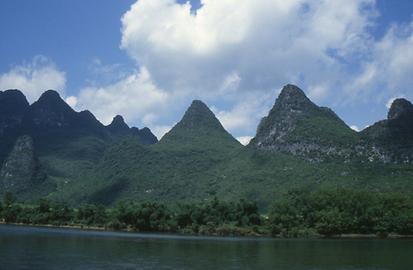
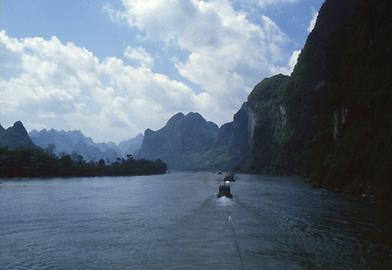
Locals travel on the river or cross it frequently. It can be considered a part of their everyday life. In addition to their boats the locals also build small rafts out of thick bamboo canes. They paddle and steer them standing up. The tour boats are not much liked due to the waves they create.

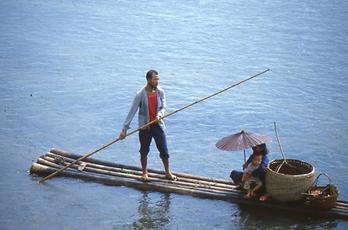
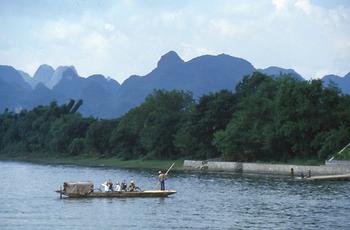
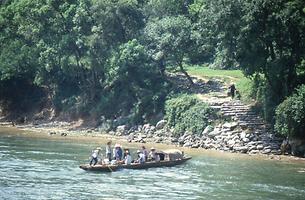
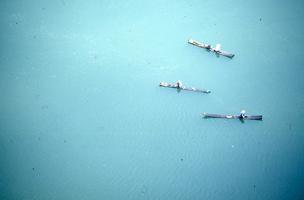
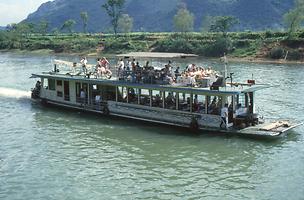
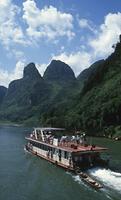
One can also see fishermen with trained cormorants, who are skilled and eager fish hunters by nature. They dive and hunt for their masters, but fishes from a certain size upwards do not belong to them. A narrow ring around their neck prevents them from swallowing. Instead by their prey they are rewarded with some smaller fish.
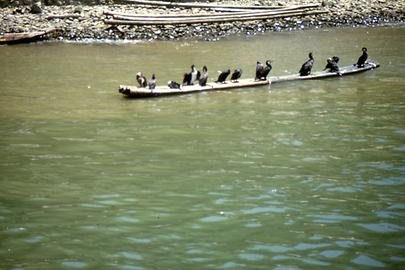
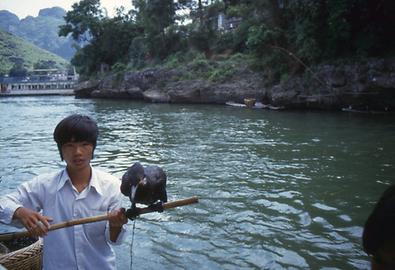
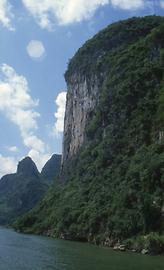

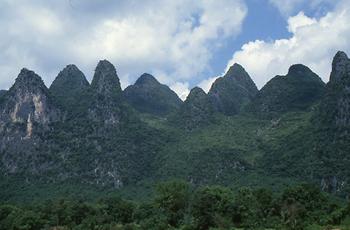


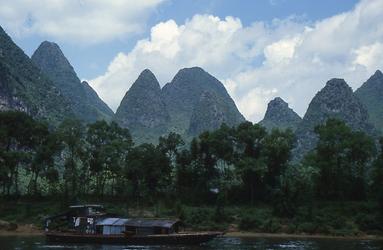

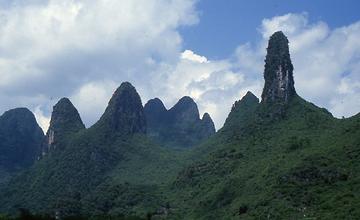
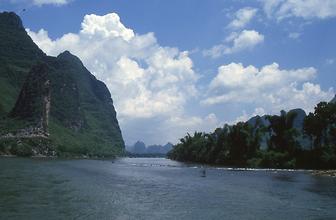

Along the banks of the river the fertile farmland is used to grow rice. The subtropical climate with its steady warmth and enough rainfall allows two, sometimes even three, harvests per year. Clearly those can only be achieved by hard labor. That includes: Plowing, watering the fields, cultivating the seedbeds, planting and transplanting, observing the ripening process, cutting and threshing of the plants. But because of this Guangxi can be considered one of the rice bowls of China.
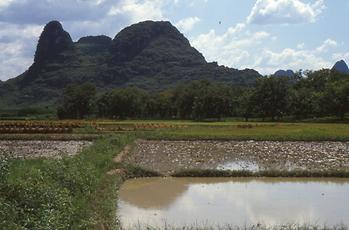



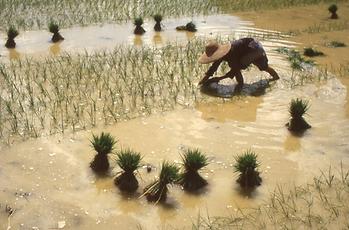
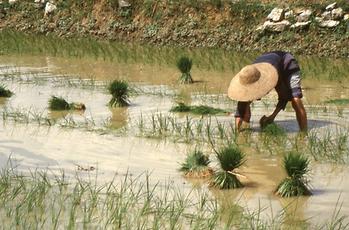




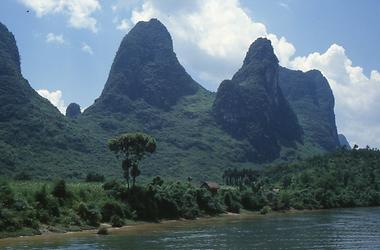
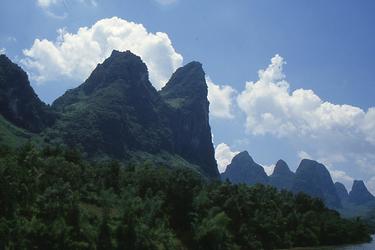

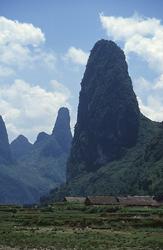
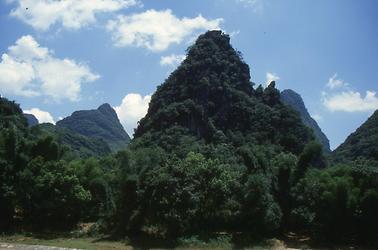
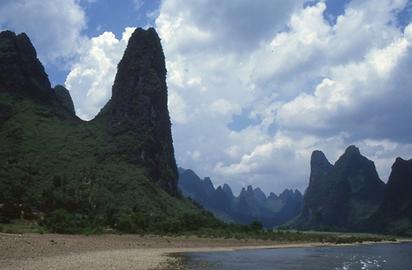

Auf dieser Felswand enthüllen sich dem Betrachter die Umrisse von zwölf Pferden.

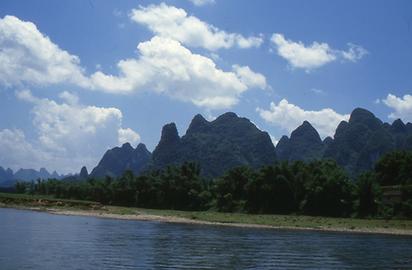
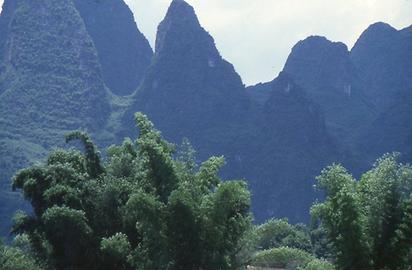


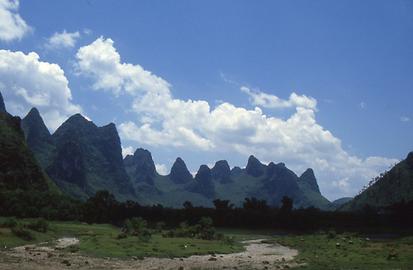

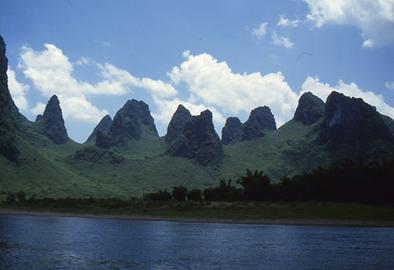
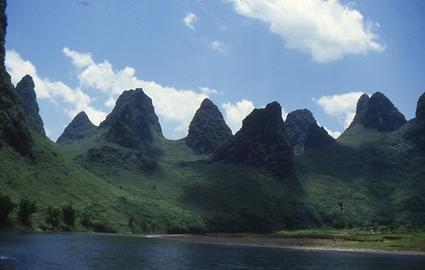
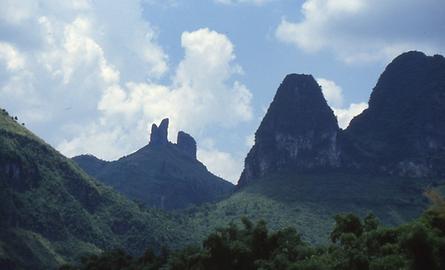

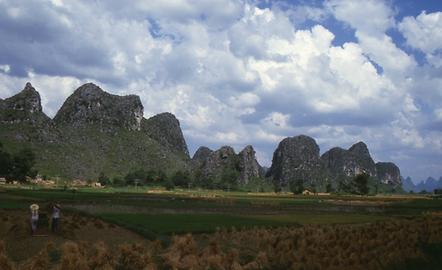
Although the City of Guilin serves as a starting point for various explorations on the Li Jiang, it has no significant attractions to offer itself. At least none which would justify a trip to this originally called “city of the forest of cinnamon blooms”.
When the imperial Ming dynasty was nearing its ende around 1640 and could not fend off the Manchu-Qing any longer, there was still a tiny Ming homestead here. They had even built a so called spirit alley for the graves of their members. This spirit alley consisted of roughly cut stone figures of mystical animals, mandarins and warriors, all supposed to accompany and protect the souls of the dead.
However, through one event of the more recent history of China the city has gained emminent importance for world culture. Mao Zedongs armies had already conquered almost all of China from Chiang Kai-sheks armies, when the Kuomintang started transporting art treasures out of Beijing. The breathtaking treasures of the Forbidden City were stored in thousands of crates and brought here before being shipped out to Formosa, todays Taiwan. Today they make up one of the grandest collections in the world, placed in the National Palace Museum in Taipeh, the capital of Taiwan.
- For a pictorial presentation of Taiwan see the roughly 600 pictures by Gerhard Huber.
